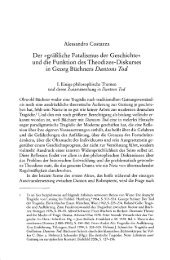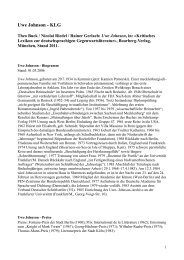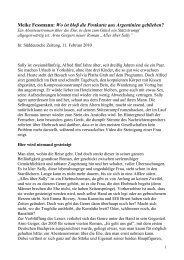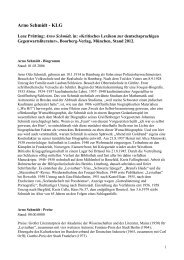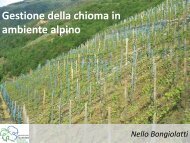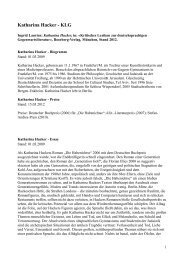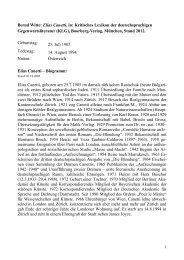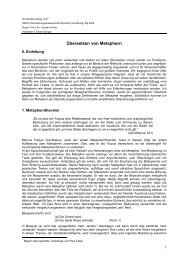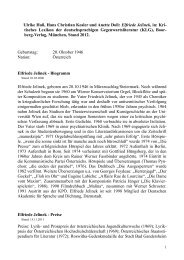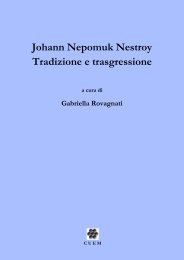Volume of Abstracts - Università degli Studi di Milano
Volume of Abstracts - Università degli Studi di Milano
Volume of Abstracts - Università degli Studi di Milano
Create successful ePaper yourself
Turn your PDF publications into a flip-book with our unique Google optimized e-Paper software.
5 th Int. Workshop on Ice Caves (IWIC – V)<br />
Barzio (LC), Valsassina, Grigna and <strong>Milano</strong>, September 16 – 23, 2012<br />
<strong>Volume</strong> <strong>of</strong> <strong>Abstracts</strong><br />
the deepest caves in the world are located. In this context are common the<br />
ice caves.<br />
The Peña Castil ice cave is located in the central massif <strong>of</strong> Picos de Europa<br />
in a glacial cirque under the Peña Castil summit (2444 m) and hung on the<br />
Duje valley. The principal entrance is at 2010 m a.s.l with an eastern<br />
orientation without others remarkable entrances. The horizontal<br />
development is aprox. 65 m length and the vertical one is unknown. The<br />
cave is organised in an access sloping ramp, two main principal rooms in<br />
which the ice block is located, and a terminal room, the smallest. The ice<br />
perennial deposit surface is 448 m 2 and its depth, till now known, is at<br />
least -15 m. It involves an estimated ice filling at least 6700 m 3 .<br />
First climate results obtained by continuum dattaloggers inside the cave<br />
and exterior meteorological stations, attached to karst morphology, show<br />
us a static behaviour for the cave. Two main thermal periods can be<br />
<strong>di</strong>fferentiate: the open period, between November and February,<br />
characterised by the influence <strong>of</strong> external con<strong>di</strong>tions (heterothermal regime<br />
predominance); and the closed period, gets free <strong>of</strong> external influences and<br />
with stable temperatures closed to freezing point (homothermal regime<br />
predominance), is developed between May and September. Also, two<br />
secondary periods, transitional ones, are been detected. In these cases the<br />
temperatures are increasing or descen<strong>di</strong>ng progressively up to adjusting to<br />
the principal periods. The mean annual temperatures don‟t overcome 0ºC<br />
in any zone <strong>of</strong> the cave during the control time, recor<strong>di</strong>ng -4ºC for absolute<br />
minimum and exceptionally +2ºC for absolute maximum temperature only<br />
reach the terminal room some days in autumn. The <strong>di</strong>stribution <strong>of</strong><br />
temperatures shows <strong>di</strong>fferent behaviour in the cave <strong>di</strong>rected by the<br />
influence <strong>of</strong> the ice body. When the influence <strong>of</strong> the ice decrease, minor<br />
means annual temperature, major maximal values, or more days over the<br />
freezing point are registered.<br />
Can be <strong>di</strong>stinguished a principal ice accumulation period linked mainly to<br />
the melt <strong>of</strong> the snow cover (top time at the beginning <strong>of</strong> June),<br />
characterized by largest cryoespeleothems and a visible refreezing cap in<br />
the ice block surface in the established closed period. In the rest <strong>of</strong> the<br />
year the melting processes predominate, reaching the highest melt in<br />
winter season. Likewise we identified <strong>di</strong>fferent ice structures and<br />
cryospeleothems depen<strong>di</strong>ng on the origin and crystallization, highlighting<br />
some <strong>of</strong> them not appreciated in the others investigated ice caves in Picos<br />
de Europa, case <strong>of</strong> the ra<strong>di</strong>cular crystallization hoarfrost.<br />
53




